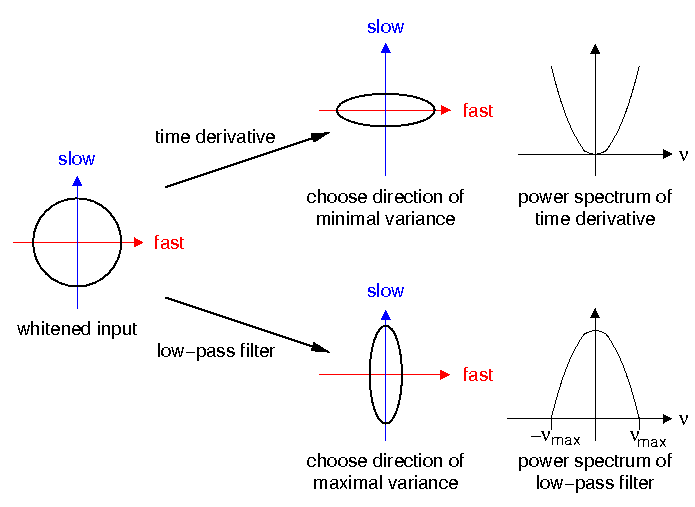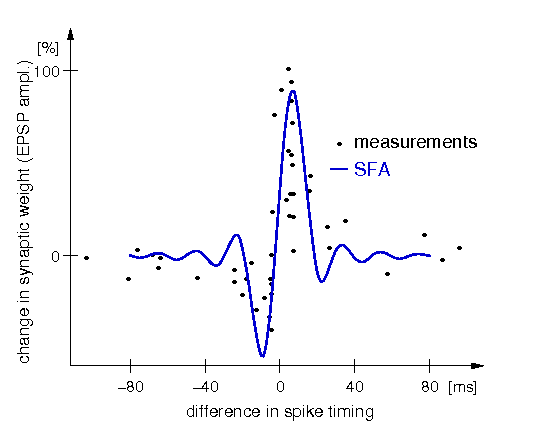
Slow Feature Analysis (SFA) is an abstract algorithm based on slowness as a learning principle. The objective is to minimize the variance of the time derivative of the normalized output signals. It has proven a powerful tool for modeling the unsupervised learning of complex cell receptive fields, visual invariances, and place cells in the hippocampus. However, the algorithm is far from being physiologically plausible, because it is based on a generalized eigenvalue problem on a covariance and a time-derivative covariance matrix. In this project we have investigated whether SFA can be implemented with spiking model neurons.
The first conceptual step in this direction is to realize that for continuous signals instead of minimizing the time derivative one can also maximize the variance of the low-pass-filtered normalized output-signal, which can be done with a modified Hebbian learning rule. If one uses a low-pass filter with a power spectrum of an upside-down parabola, the results are identical, see Figure 1.

Figure 1: Minimizing the variance of the time-derivative is equivalent to maximizing the variance of the low-pass filtered signal.
The next step is to translate the modified Hebbian learning rule into an STDP learning rule for spiking Poisson units. Interestingly, the resulting learning window reproduces the kind of learning windows measured experimentally, see Figure 2.

Figure 2: Comparison between theoretical (solid line) and experimental (points) STDP learning window. Data taken from [Bi & Poo, 1998].
Furthermore, it turns out that it is not the learning window per se that is of functional relevance but the learning window convolved with the EPSP. According to our theory the asymmetric shape of the standard STDP learning window might have nothing to do with causality issues but with the fact that the asymmetric low-pass filtering effect of the EPSP has to be compensated. The functionally relevant learning window might actually symmetric. Thus, our analysis offers a completely novel interpretation for the asymmetric shape of the standard STDP learning window.
Black colored reference are the principal ones. Gray colored references are listed for the sake of completeness only. They contain little additional information. .ps-files are optimized for printing; .pdf-files are optimized for viewing at the computer.